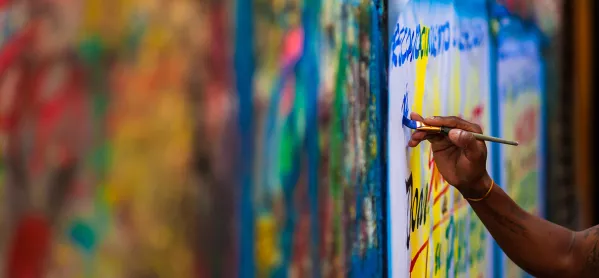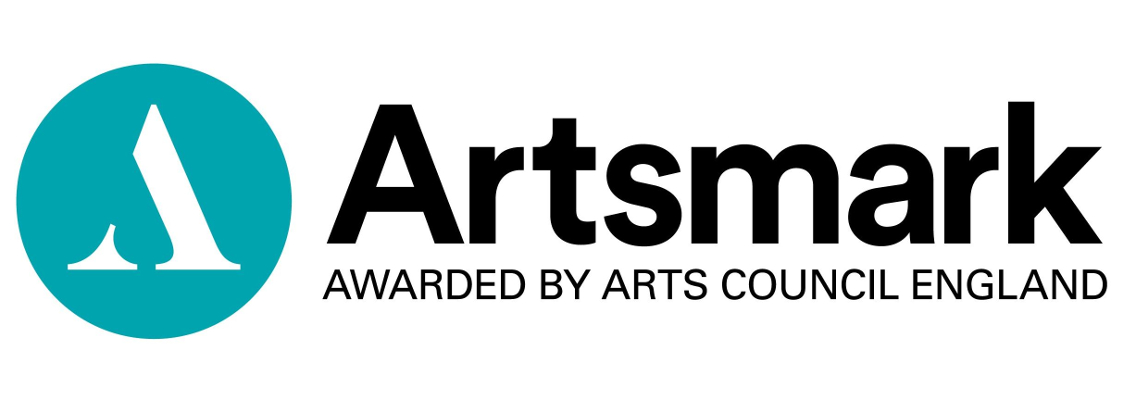Why more creativity in schools is win-win for students

When Covid-19 hit, schools had to make enormous changes.
Leaders had to close their doors to almost all students, and staff had to quickly get up to speed with a whole new approach to teaching.
But as teachers, students and parents got to grips with home-based learning and the strangeness of life under lockdown, creativity flourished - from the NHS tribute rainbows that adorned windows across the country, to baking banana bread, making TikTok videos and Turner Prize winner Grayson Perry launching his wildly popular art club.
Mental health benefits
The surge of artistic spirit during troubled times perhaps shouldn’t come as a surprise.
The mental health benefits of creativity and culture are now increasingly well recognised; research from the Scottish government found that those who take part in creative and cultural activities were almost 40 per cent more likely to report good health than those who don’t, and a 2018 study confirmed the positive “artlift” effect on the wellbeing of art interventions on those with health issues.
And there are benefits for employability, too. According to the Future of Jobs report by The World Economic Forum (WEF), creativity - along with complex problem-solving skills, critical thinking and emotional intelligence - is predicted to be among the top 10 most in-demand skills by 2022.
A more creative curriculum
Yet many schools have been left with a narrow, less creative curriculum after years of austerity and an increased focus on literacy and numeracy results and league tables.
And now, as they begin reopening, there are big questions to tackle around what comes next. How can leaders make sure all students are up to speed after the time away? How can wellbeing issues be addressed? How should we begin planning for the future?
The challenge is to integrate creativity into the daily life of the whole school, in a way that both enables students to feel the boost to their immediate wellbeing, and equips them with tools to manage challenging times that may be ahead.
Soft skills
Janine Chamberlin, director of Talent Solutions UK for LinkedIn, says that creative and analytical skills will always be in demand, even in an increasingly automated job market.
“Soft skills like creativity are innately human,” she says. “They cannot be automated - and they are crucial for success.
“Creativity is the number one most in-demand soft skill, according to LinkedIn data. Companies are looking for people who can creatively approach problems and tasks across all business roles, from software engineering to HR.”
The arts undoubtedly have a large role to play in equipping students with skills that are both desirable in the workplace and empower them to have better mental health and wellbeing (which will be more important than ever in the wake of Covid-19).
Creating a creative school
So, what could this look like in practice? The staff of Malmesbury Park, a large primary in Bournemouth, pride themselves on the ways that arts, culture and creativity flow throughout their school, says headteacher Jackie Green.
Their annual show, for example, involves the whole school uniting and working together to respond to a theme in a variety of ways for two weeks. By the time that show is performed, the entire building has been transformed into a living, breathing art installation.
This whole-school approach helps children to develop creative skills for their futures, but also brings them together in the present.
This enables meaningful collaboration and cross-cultural experiences, which bring wellbeing boosts through connection and community.
“As a culturally diverse school, with 38 languages spoken, creativity is one aspect of learning that all children can freely access, regardless of ability, background, culture or language,” Green says.
“We strongly believe that we thrive mentally and emotionally when we allow our creativity to flow, not only in the traditional creative subjects but throughout all learning.”
Going for gold
Mayflower Primary School in Tower Hamlets has achieved the Gold award from Artsmark - which supports educational settings in bringing learning to life through arts and culture - in recognition of their commitment to cultural education and embedding creativity across their whole curriculum.
Ben Jones is the creative arts lead at the school and says he has seen first hand how being creative equips pupils with transferable, cross-curricular skills.
“They are much more independent because they are encouraged to respond in individual and unique ways and to not just recreate what’s in the teacher’s head,” he says.
English teacher Lauran Hampshire-Dell looks back fondly on her time teaching at a boarding school where there was a strong focus on the future beyond the school “bubble”. This was partly because school was students’ only link to the outside world, she explains.
Hampshire-Dell proudly recalls how creativity permeated every subject, from mathematics to essay writing, problem solving and design, and the myriad benefits this brought for students, which they were able to take into their future careers.
“Creativity gives confidence and a springboard where students won’t be afraid to try, fail, try again,” she says.
“The most important aspect of creativity is that it builds resilience. You very rarely get something creative right the first time you try. It’s passion and determination to get it right that over time hardens into resilience.”
Increased emotional intelligence
It is not only resilience that creativity fosters; according to LinkedIn’s Chamberlin, it also encourages other interpersonal skills such as persuasion, collaboration, adaptability and emotional intelligence.
“Learning new skills and developing a growth mindset can help people feel more confident and motivated at work, and unlock new opportunities today and in the future,” she says.
And headteacher Jackie Green says she’s happy to be sending her students out into the world with a creative focus that will give them an edge in the future.
“In a crowded and competitive job market, being able to approach anything with a creative perspective makes individuals stand out to employers, as well as demonstrating them to be more well-rounded and versatile.”
The future is far from clear for any of us, and especially for our students, who are growing up into a rapidly changing world. We do know, however, that if we can nurture their creativity, we can prepare them both mentally and practically to better face what lies ahead.
